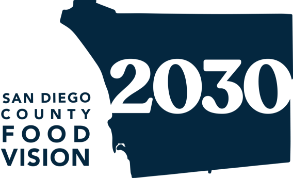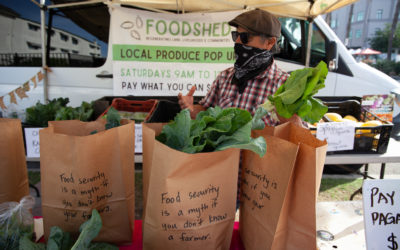Becoming a subscriber to Foodshed’s Fresh 5 program—a weekly distribution of fresh, seasonal produce, grown by the small farmers who make up the Foodshed cooperative—means you’re in for two surprises with every delivery. One is the produce itself: an ever-changing...
OBJECTIVE 7 | THE DASHBOARD
Scale Up Food Waste Prevention, Recovery, and Recycling Initiatives
Introduction
The indicators below measure our progress toward planning for a resilient food system. They will be updated regularly, and additional indicators will also be added over time.
Indicator
California Waste Sent to Landfill
Is the amount of waste sent to landfills in California increasing?
Yes, we continue to send large amounts of waste to our landfills. In 2019, 42,595,719 tons of waste were landfilled. Food makes up a significant portion of landfilled waste – it is the single largest component in California’s landfills.
About the data
Source: CalRecycle Solid Waste Landfilling Data
Last updated: 2019.
Note: Data represents waste disposed in landfills.
Indicator
Southern California Waste Sent to Landfill
Is the amount of waste sent to landfills in Southern California increasing?
Yes, the 7 counties that make up Southern California account for the majority (about 55%) of all landfilled waste in our State, contributing 23,568,058 tons of waste to landfill.
About the data
Source: CalRecycle Solid Waste Landfilling Data
Last updated: 2019
Note: Data represents waste disposed in landfills.
Indicator
Wasted Food by San Diego Municipality
Is food waste increasing across San Diego County’s jurisdictions?
Due to a lack of data, we are unable to assess a trend. This data represents a point-in-time baseline for food waste in the region. Collecting information of food waste disposal is a tricky calculation, because best practices for food waste conversion calculations change frequently. Based on the latest available data, the cities in San Diego County sent an estimated 552,218 tons of food waste to landfills in 2018. As one might expect, the population size of a city corresponds with the total quantity of food wasted.
About the data
Source: Organics Regional and County Capacity (May 2021), County of San Diego Department of Public Works
Last updated: 2018
Note: Data reflects food waste disposed in landfills. The cities of Chula Vista, Oceanside, and San Diego use food waste conversion factors from waste characterization studies applied to disposal tonnages. All other cities use the CalRecycle food waste conversion factor from their 2018 Waste Characterization Study.
Indicator
Organics Recycling Capacity Gaps
Is our capacity to process organic waste increasing in San Diego County?
No, we currently lack sufficient organic waste recycling capacity in our County. There are over 1 million tons of organic waste that are unable to be recycled due to a lack of capacity and infrastructure.
About the data
Source: Organics Regional and County Capacity (May 2021), County of San Diego Department of Public Works
Last updated: 2021





